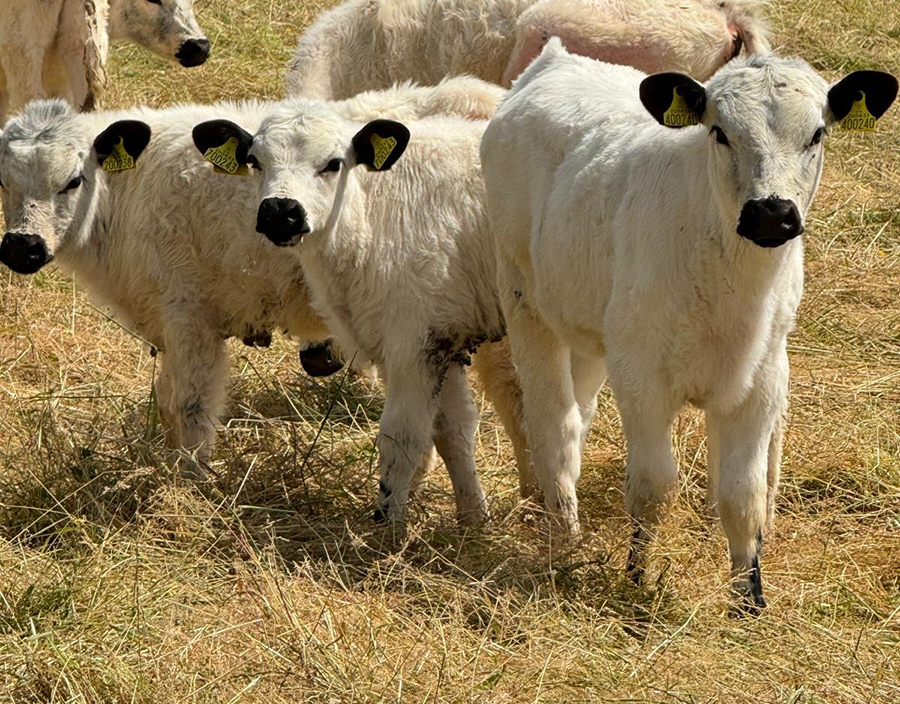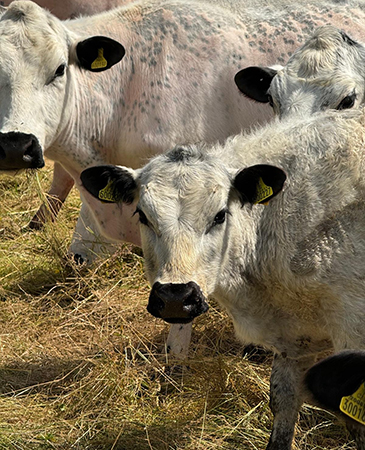British White cattle fit into farmer’s CS plans
27th July 2024
After the withdrawal of BPS, George Kershaw introduced British White cattle to his farm, as part of their Countryside Stewardship scheme.

George Kershaw farms 250 acres divided between Malmesbury and Swindon, 75 acres of which is 20-year-old woodland, with the remainder being permanent pasture on heavy clay. This means the farm has avoided arable cropping and leans more toward grassland management.
Up until last year, they kept up to 500 ewes and made enough haylage for them for bad winters.
They also have around two acres of solar panels, which were installed when the FIT subsidies were high, and a woodchip boiler which heats several houses. In theory, the woodland should provide enough cord wood to feed the boiler, though in practice it does not, but they are about to have the ash which will help a little.
“The sheep have never been particularly profitable, and the withdrawal of BPS made the situation even worse,” George explained. “We therefore decided upon a sharp change of strategy and cut back the number of sheep significantly.”
The farm has successfully joined the Countryside Stewardship scheme on Higher Tier to create a woodland pasture. A significant element of this is the SP8 supplement which encourages the use of ‘native breeds at risk’ pedigree stock.

“The breed that we have gone for is the British White, one of their main advantages being that they are relatively docile, which is an important consideration for us as we have not kept cattle before,” George explained. “Additionally, whilst there are not many herds compared to some of the larger breeds, there are enough of them to give sufficient numbers to be able to start a herd and have access to good bulls and AI.
“We also have the British White Cattle Society which, through our breed secretary Sarah Cook, gives useful advice and acts as the linchpin in forming a community of like-minded, and helpful, farmers. The animals with their trademark black ears, nose and socks are very beautiful.”
George added: “Having begun with a herd of 10 heifers and cows plus four calves, we plan to start with a very low grazing intensity. Our initial plan is to maintain the pedigree registrations and breed them for the meat market, but we’ll see how that goes and keep an open mind about how large to grow the herd. These are exciting times in many ways and it will be fascinating, as well as financially significant, to see if our change of direction is successful.”
Learn more about the breed, and how it can be used for farming support schemes, on the BWCS website
Read more livestock articles
